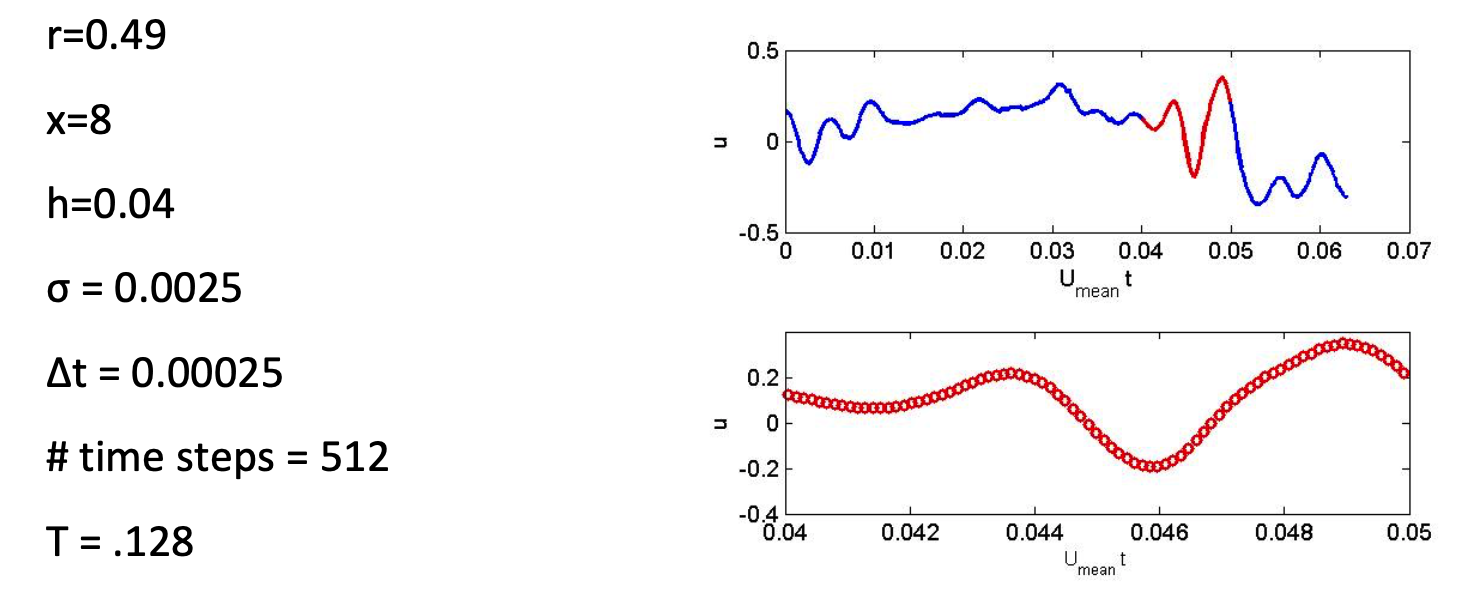
Planar & Round Jets: Analysis of Particle Motions & Statistics in High Reynolds Number flows
This study are based on our former CTO, Dr. Peter Bernard’s presentation at the Institute of Mathematical Sciences (IMS).
Flows Considered:
Turbulent blob created via short-time pulse of a planar jet.
Co-flowing round jet.
Issues:
Accuracy
Effects of numerical parameters
Insights into particle accelerations
Turbulent Blob – (from short time pulse of planar jet)
Orifice has unit width.
20 layers of filaments.
Circulation corresponds to Poiseulle Flow.
4 periodic extensions to either side used in computing velocities.
Coflowing Round Jet
Coflows = 1/2, 1/3, 1/4, 1/10.
5 layers around unit diameter orifice
Tracers in a round turbulent jet (coflow = ½)
Velocity Excess in Coflowing Round Jet vs. Streamwise Position
Uexcess = (Ucenterline – Ucoflow)/Ucoflow
Numerical Parameters
h – tube length
Δt - time step
G - circulation
σ - smoothing parameter in Biot-Savart Law
d - criterion for loop removal
Reynolds Number of a Turbulent Blob
h=0.005
Velocity data acquired on spanwise lines: typically, 625 lines, 2500
Statistics include:
velocity variances
longitudinal and transverse
2pt velocity correlation
functions → microscales
structure functions
Sp(r)=|u(x+r)-u(x)|p
1D energy spectra points/line
Two point longitudinal, f(r), and transverse, g(r), correlation functions – note the strong dependence on σ.
Symbols show consistency with the isotropy condition:
1D Energy Spectra in Kolmogorov Units
Statistics of Particle Accelerations
Tracers determined from fine-grained calculations at small Δt:
vortical field evolves with tracers.
Acceleration data acquired from sampling along paths:
mainly determined from derivative of piecewise parabolic fits to velocity data
Loop removal appears to create outlier events that add to (or cause)
Δt dependence of moments. However, PDF’s are relatively unaffected.
Turbulent blob
Coflowing round jet
Variance and flatness statistics:
Δt = 0.005, σ = 0.005,
varx = 3.72, vary = 4.06, varz = 3.69
fx = 28.4, fy = 24.9, fz = 21.9
Re=546623 Rλ=442 ε= 0.016
a0 = varx Re1/2 ε3/2 = 2.49
End on view of tracers in coflowing round jet.
Note the intermittency
PDFs of fluid particle accelerations: coflowing round jet
Acceleration auto-correlation for round jet
Conclusions:
Grid free vortex filament simulations including loop removal as a de facto “subgrid” model provide a useful avenue for simulating complex high Reynolds number flows.
A small tube length is necessary for accurate Reynolds stress predictions.
The general consistency with Kolmogorov inertial range scaling allows for the determination of local Reynolds number Rλ.
For a given set of numerical parameters, Rλ can be expected to increase as σ decreases. In fact, Kolmogorov length scale ≈ 1/5 σ.
PDFs of fluid accelerations in the blob and round jet flows are consistent with physical experiments in other contexts.
Outlier events caused by loop removal complicate the determination of moments.

























